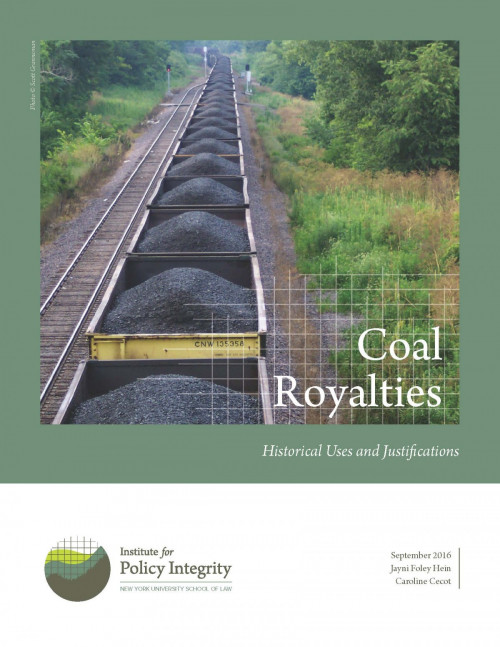On January 15, 2016, the Department of the Interior (Interior) announced that it would begin a comprehensive review to identify and evaluate potential reforms to the federal coal program. The review will analyze issues including leasing of public lands for mining; how to account for the environmental and public health impacts of federal coal production; and how to ensure American taxpayers are earning a fair return for the private use of these public resources.
Royalties have been used as a policy lever to influence behavior and meet national goals for centuries. For example, royalties have been set at specific rates in order to: encourage resource production; encourage westward expansion; maintain the incentive to create new inventions; and deter socially undesirable behavior, to name just a few. In line with this finding, this report concludes that it would be reasonable for Interior to adjust coal royalty rates to account for negative externalities that are not otherwise addressed by regulation. Historical uses, accepted economic justifications, legislative history, and examples of royalty use by private actors and in other industries discussed in the paper all support the determination that it would be reasonable for Interior to increase coal royalty rates to account for externality costs and to better align the federal coal program with national climate change priorities.

